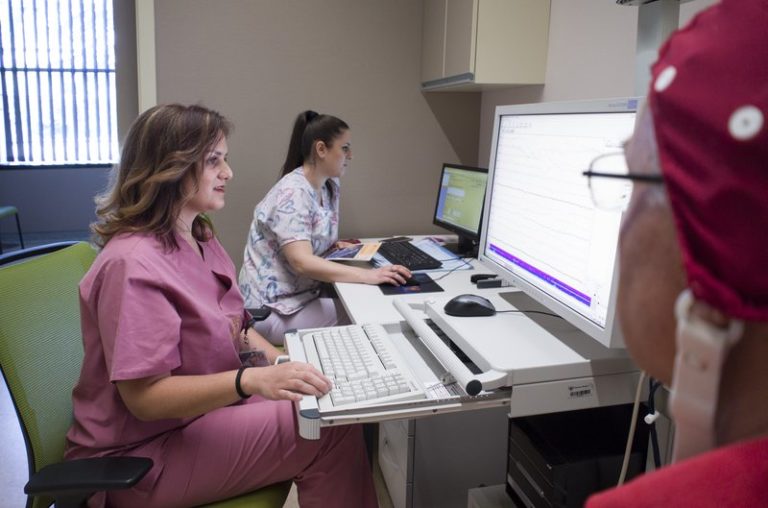 00389 2 3091 484
00389 2 3091 484
Medical services
NEUROLOGY
Visual evoked potentials - VEP
VEP – is a neurophysiological method that uses light stimuli to test the transmission from the retina to the visual cortex.
Indications:
- Lesions on the optical nerve; visual pathways
- Lesions on the level of chiasma; visual cortex, cortical
- Blindness
- Differentiation of the vascular from the demyelinate
- Lesions proven with NMR
- Multiple sclerosis – 90% positive finding when there are clinical and subclinical lections, serving as diagnostic criteria
- Diabetic retinopathy, retrobulbar neuritis etc.

Somatosensory evoked potentials - SEP
SEP – is a sophisticated neurophysiological method used for early detection and localization of hidden or manifest sensory damages of the sensory system, from the peripheral to the central nervous system. This test is used to precisely localize damages to the sensory pathways.
This method uses surface disc electrodes. These electrodes are placed along the nerve stems on the legs, the arms or the spine. Then, the total potential from the scalp above the somatosensory region is registered. This method is completely safe and painless and can be repeated many times.
Indications:
- Early detection of multiple sclerosis. The finding is positive in 80% of the cases;
- Traumatic or compressive injuries at different levels of the spinal cord and brain injuries;
- Cerebrovascular diseases etc.
Auditory evoked potentials and brainstem auditory potentials - BAEP
BAEP – is a painless and a very precise method for differentiating the injuries of the auditory pathways. It can be used multiple times, and it can help monitor the prognosis of the condition.
Indications:
- Dizziness and balance disorders;
- Strokes on the brainstem;
- Carotid disease;
- Demyelinate diseases;
- Degenerative diseases;
- Neurinoma on n. Acusticus and tumors of the pontocerebellar angle;
- Differentiating non-comatose conditions and bran death.
Evoked potentials
Evoked potentials are electric potentials that help perceive external sensations and also include the response of the brain centers to those sensations.
Depending on the sensation that evokes the potentials, there are several types of evoked potentials. The most commonly used potentials in our practice are: Visual Evoked Potential (VEP); Auditory Evoked Potential and Brainstem Auditory Potentials (BEAP), Somatosensory Evoked Potentials (SSEP).
Symptoms that this method can reveal are sight impairments (poor or completely lost eyesight), hearing impairments (poor or completely lost hearing, “buzzing”) and sensitive systems (numbness, “prickling”, “burning”, “shivers” etc.)
The examination is painless and there are no absolute counterindications to preparing for this examination. The preparation includes clean hair, without gels. On the day of the examination, the patient should have had a meal and should not take any sedatives.
Electroencephalography (EEG)
ELECTROENCEPHALOGRAPHY (EEG) – is a method used to examine the function of the brain.
It is a noninvasive technique used to register the biopotential of the brain through the skull using surface electrodes or EEG caps.




